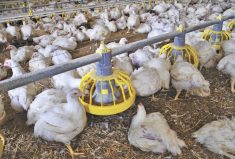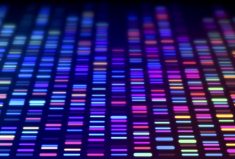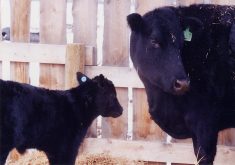Semex has formed a partnership with Recombinetics, a genetic engineering firm, to use genetic ‘editing’ to produce animals that have no horns.
Semex, a farmer-owned company and Canada’s largest dairy genetics company, and the Minnesota-based Recombinetics will use gene editing for polled as a test case of the regulatory process for gene edited foods in Canada and the United States.
Why it matters: “Editing” horns out of dairy genetics would have significant animal welfare benefits while sparing producers the time and cost of dehorning calves.
Read Also

New Iridium technology helps block GPS spoofing
A tiny new chip will allow Iridium’s Positioning, Navigation and Timing (PNT) signals to be received much smaller devices, create a backstop against Global Positioning Systems (GPS) spoofing.
The process is expected to take years and will involve government, food processors, retailers and others with a stake in dairy genetics.
Most of the dairy cows in Canada grow horns, which are removed at a young age because of animal and human safety concerns. A majority of beef animals are polled after a long and concerted effort to breed out the trait by conventional genetic selection. The trait has only recently become popular in mainstream dairy breeds such as Holsteins and Jerseys. Polled Holstein females have topped sales in recent years, but even though the trait is dominant, it is of minor economic significance and as a result, farmers have been reluctant to use semen from polled bulls across wide numbers of cattle.
There are also concerns about limiting genetic diversity while breeding for specific traits. Indeed, most polled Holsteins can be traced to a handful of farms.

Eliminating horns in dairy cattle would reduce stress on young calves during the dehorning process.
“We think that there’s a slowly developing but definite trend towards consumer awareness to animal welfare,” said Michael Lohuis, vice president of research and innovation with Semex. “This is a chance to use this technology to address that.”
What’s the potential in gene editing?
Gene editing has much greater potential than editing out genes for horns.
“Theoretically there’s lots of other opportunities. We could fix genetic diseases that may damage the health or livability of an animal,” said Lohuis.
He said Recombinetics is working with the Slick gene, a gene isolated years ago that results in cattle with shorter hair more able to tolerate the hotter conditions in subtropical areas.
Companies are working at editing out the genes in hogs that result in boar taint.
However, Lohuis said that the regulatory system has to be tested first, and that Semex is currently working on no other gene editing technologies.
“We have reached out to stakeholder partners in the industry, dairy farmer groups, as well as milk processors and retailers. We want to hear from them as well on this. This is the very beginning of this project. We’ll have many years to have conversations like this.”
The hornless gene is well known and easy to access. Other traits will be more complex.
The project is being led by Tad Sonstegard, chief scientific officer of Acceligen, Recombinetics’ agriculture division.
“The polled trait has been part of bovine genetics for more than 1,000 years, and it has been conventionally bred and selected for in some cattle breeds, but not in most high-merit dairy breeds,” said Sonstegard. “We have proven we can safely introduce the polled trait into any breed of horned dairy cattle with complete precision.”
Gene editing allows small adjustments to an animal’s genome. In this case, Recombinetics makes use of the cell’s natural DNA repair functions to replace the horned gene with a naturally occurring polled gene. Gene editing is done very early when the animal is still just a few cells.
Recombinetics uses the TALEN (Transcription Activator-Like Effector Nucleases) technology for gene editing. It is the less famous gene editing technology compared to CRISPR.
The regulatory route
In Canada, novel foods, including anything created using a new process not used in food before, is regulated by Health Canada, while in the United States, gene edited food animals are under the regulations of the Food and Drug Administration, while plants are regulated by the U.S. Department of Agriculture.
Lohuis said that the Canadian Food Inspection Agency and Environment Canada are also involved in the regulatory process and they have opened up discussion with all three agencies.
He said the Canadian approach of regulating each product individually makes more sense than blanket approval needed in the U.S. on the actual technology used to create the product.
Gene editing differs from genetic modification in that it changes or turns on or off already existing genes. Genetic modification added in genetic material, often from an external source.
“Our approach is that we understand there are questions about gene editing at this point. We felt we would be very transparent with everyone in the supply chain.”















